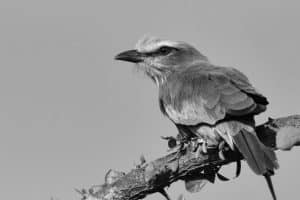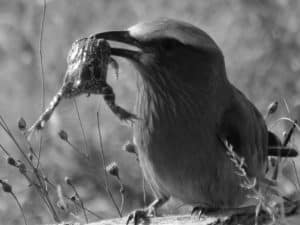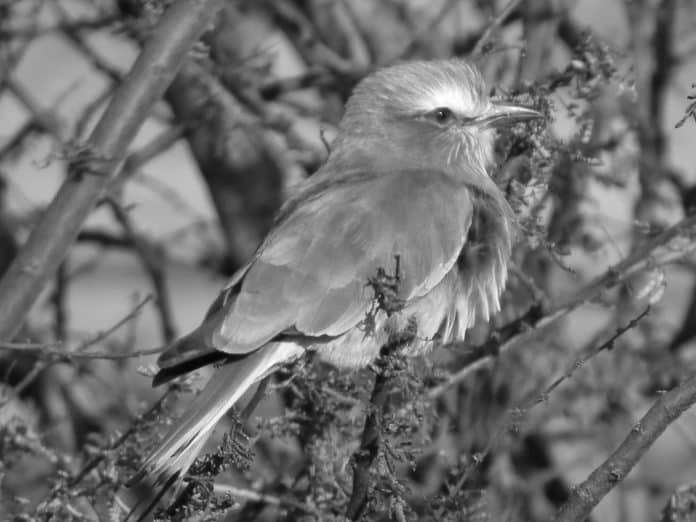Introduction to the Lilac-Breasted Roller
The Lilac-Breasted Roller (Coracias caudatus) is a medium-sized bird, known for its strikingly colorful plumage and distinctive aerial acrobatics. This stunning bird is a member of the roller family and is widely recognized as one of the most beautiful birds in Africa. The Lilac-Breasted Roller in Tanzania is named for its vibrant lilac breast, which contrasts with its turquoise wings, bright green back, and deep blue tail feathers. Its long, slender beak and sharp, hooked tip make it a formidable hunter, preying on a variety of insects and small animals.

In Tanzania, the Lilac-Breasted Roller is an iconic symbol of the country’s natural beauty and biodiversity. It can be found in a wide range of habitats, from open woodlands and savannas to grasslands and agricultural areas. This adaptable bird is a common sight in many of Tanzania’s national parks and game reserves, where it can often be seen perched on tree branches or soaring through the sky in search of prey.
The Lilac-Breasted Roller is not only a visual delight but also a vocal one. Its call is a series of harsh, grating sounds, often heard during the breeding season as males perform acrobatic displays to attract mates. These displays involve impressive aerial maneuvers, including swooping dives and mid-air somersaults, making the Lilac-Breasted Roller a true spectacle to witness in the wild.
Habitat and Distribution of the Lilac-Breasted Roller in Tanzania
The Lilac-Breasted Roller is widely distributed across sub-Saharan Africa, including Tanzania, where it can be found in a variety of habitats. This adaptable bird is particularly common in the northern and eastern regions of Tanzania, where it inhabits open woodlands, acacia savannas, and grasslands. It is also known to frequent agricultural areas and human settlements, making it a familiar sight to many Tanzanians.
The diverse landscapes of Tanzania provide ample opportunities to spot the Lilac-Breasted Roller in its natural habitat. In the Serengeti National Park, the bird can often be seen perched on the branches of acacia trees, its colorful plumage standing out against the savanna backdrop. In the Tarangire National Park, the Lilac-Breasted Roller is a common sight, particularly near water sources where it can hunt for insects and small reptiles.
Tanzania’s rich biodiversity and conservation efforts have helped to protect the Lilac-Breasted Roller’s natural habitats, ensuring that this stunning bird continues to thrive in the wild. However, like many species, the Lilac-Breasted Roller faces threats from habitat loss, agricultural expansion, and climate change. Conservation efforts are crucial to safeguarding the future of this magnificent bird in Tanzania and beyond.
Physical Characteristics and Behavior
The Lilac-Breasted Roller is a medium-sized bird, measuring around 14 inches in length and weighing approximately 3.5 ounces. It is characterized by its vibrant plumage, with a lilac breast, turquoise wings, bright green back, and deep blue tail feathers. Its long, slender beak and sharp, hooked tip make it a formidable hunter, allowing it to catch a wide variety of insects and small animals.
In addition to its striking appearance, the Lilac-Breasted Roller is known for its distinctive aerial acrobatics. During the breeding season, males perform impressive displays to attract mates, involving swooping dives, mid-air somersaults, and loud, harsh calls. These displays are a sight to behold and a testament to the bird’s agility and strength in flight.
The Lilac-Breasted Roller is a solitary bird for much of the year, but during the breeding season, pairs come together to build nests in tree cavities or abandoned woodpecker nests. The female lays a clutch of eggs, and both parents take turns incubating them and caring for the chicks. This dedicated parental care ensures the survival of the next generation of Lilac-Breasted Rollers, contributing to the ongoing success of the species in Tanzania’s diverse ecosystems.
The Role of the Lilac-Breasted Roller in Tanzanian Ecosystems
The Lilac-Breasted Roller plays a vital role in Tanzania’s ecosystems as a predator of insects and small animals. Its diet includes a wide variety of insects, such as grasshoppers, beetles, and caterpillars, as well as small reptiles, rodents, and even other birds. By controlling insect populations, the Lilac-Breasted Roller helps to maintain the balance of Tanzania’s ecosystems, contributing to the overall health and diversity of the region’s wildlife.
In addition to its ecological significance, the Lilac-Breasted Roller is a symbol of the natural beauty and biodiversity of Tanzania. Its vibrant plumage and graceful flight make it a beloved sight for birdwatchers, photographers, and nature enthusiasts from around the world. The presence of the Lilac-Breasted Roller in Tanzania’s national parks and game reserves adds to the allure of these protected areas, drawing visitors to experience the wonders of the country’s rich wildlife.
Conservation efforts and Threats to the Lilac-Breasted Roller
While the Lilac-Breasted Roller is currently classified as a species of “Least Concern” on the IUCN Red List, it faces several threats to its continued survival in Tanzania. Habitat loss due to agricultural expansion, deforestation, and human development is a major concern for the species, as it relies on diverse habitats for foraging, nesting, and breeding.
Climate change is also a significant threat to the Lilac-Breasted Roller, as it can disrupt the availability of food sources and alter the bird’s natural habitats. Additionally, the illegal capture of birds for the pet trade and hunting for sport pose further risks to the population of Lilac-Breasted Rollers in Tanzania.
Conservation efforts aimed at protecting the Lilac-Breasted Roller and its habitats are crucial to ensuring the long-term survival of this iconic bird in Tanzania. National parks, game reserves, and other protected areas play a vital role in safeguarding the habitats of the Lilac-Breasted Roller, providing safe spaces for the bird to thrive and raise its young. Sustainable land management practices, habitat restoration initiatives, and community-based conservation projects are essential for addressing the underlying threats to the species and promoting coexistence between humans and wildlife.
Best Places for Birdwatching and Spotting the Lilac-Breasted Roller in Tanzania

Tanzania’s diverse landscapes offer a wealth of opportunities for birdwatchers and wildlife enthusiasts to spot the Lilac-Breasted Roller in its natural habitat. The country’s national parks and game reserves are prime locations for observing these stunning birds, providing a chance to witness their aerial displays, vibrant plumage, and natural behaviors.
The Serengeti National Park is a renowned hotspot for birdwatching, with its vast savannas and woodlands providing an ideal habitat for the Lilac-Breasted Roller. Visitors to the park can often spot these colorful birds perched on tree branches or soaring through the open skies, offering ample opportunities for photography and observation.
Another popular destination for birdwatching in Tanzania is the Tarangire National Park, known for its diverse birdlife and abundance of wildlife. The park’s baobab-studded landscapes and seasonal water sources attract a variety of bird species, including the Lilac-Breasted Roller, making it a must-visit location for bird enthusiasts.
In addition to the national parks, the Ngorongoro Conservation Area and Lake Manyara National Park are also excellent places to spot the Lilac-Breasted Roller in Tanzania. These protected areas offer a mix of habitats, from lush forests to open grasslands, providing a rich tapestry of environments for the bird to thrive and for visitors to admire its beauty.
Photographing the Lilac-Breasted Roller in Tanzania
For photography enthusiasts, capturing the vibrant colors and graceful flight of the Lilac-Breasted Roller in Tanzania is a rewarding and unforgettable experience. The key to successful bird photography lies in patience, preparation, and a deep understanding of the bird’s behavior and habitat preferences.
When photographing the Lilac-Breasted Roller, it’s essential to respect the bird’s natural behaviors and avoid causing unnecessary stress or disturbance. Using long lenses and maintaining a respectful distance can help capture stunning images of the bird without intruding on its natural activities.
Early morning and late afternoon are prime times for photographing the Lilac-Breasted Roller, as the soft, warm light enhances the bird’s colorful plumage and adds a magical quality to the images. Positioning oneself near water sources or perches where the bird is known to frequent can increase the chances of capturing captivating moments of the Lilac-Breasted Roller in its natural environment.
Patience is key when photographing wildlife, and spending time observing the Lilac-Breasted Roller’s behaviors and movements can lead to unique and captivating photographic opportunities. Whether in flight, perched on a branch, or engaged in a courtship display, the Lilac-Breasted Roller offers endless possibilities for creating stunning images that showcase the bird’s natural beauty and grace.
The Cultural Significance of the Lilac-Breasted Roller in Tanzania
In addition to its ecological and aesthetic importance, the Lilac-Breasted Roller holds cultural significance in Tanzania, where it is celebrated as a symbol of natural beauty and freedom. The bird’s vibrant plumage and graceful flight have inspired local art, folklore, and traditions, making it a beloved and iconic creature in Tanzanian culture.
The Lilac-Breasted Roller is often depicted in traditional African art, where its colorful feathers and distinctive appearance symbolize the richness and diversity of Tanzania’s natural heritage. In some local traditions, the bird is associated with good fortune, freedom, and the beauty of the natural world, reflecting its revered status in Tanzanian folklore and storytelling.
The presence of the Lilac-Breasted Roller in Tanzania’s national parks and protected areas also contributes to the country’s tourism industry, attracting visitors from around the world who seek to witness the beauty of this iconic bird in its natural habitat. The bird’s cultural significance extends beyond its physical presence, serving as a symbol of Tanzania’s commitment to conservation and the preservation of its natural heritage for future generations to appreciate and enjoy.
Tips for Responsible Wildlife Viewing

When visiting Tanzania to observe the Lilac-Breasted Roller and other wildlife, it’s essential to practice responsible and ethical wildlife viewing to minimize impact on the natural environment and ensure the well-being of the animals. Here are some tips for responsible wildlife viewing:
- Respect wildlife habitats: Avoid disturbing nesting sites, feeding areas, and other critical habitats for the Lilac-Breasted Roller and other species. Observe from a distance and use binoculars or long lenses for close-up views.
- Follow park regulations: Adhere to the rules and guidelines set forth by national parks, game reserves, and conservation areas to ensure the safety of wildlife and visitors. Stay on designated trails and roads to minimize disturbance to the environment.
- Minimize noise and disturbance: Keep noise levels to a minimum and avoid sudden movements that could startle or stress the Lilac-Breasted Roller and other wildlife. Be mindful of the impact of your presence on the natural behaviors of the animals.
- Support conservation efforts: Contribute to the conservation of Tanzania’s wildlife and habitats by visiting protected areas, participating in eco-friendly tours, and supporting local conservation initiatives. Your support can help safeguard the future of the Lilac-Breasted Roller and other species in Tanzania.
Conclusion
The Lilac-Breasted Roller is a true gem of Tanzania’s wildlife, captivating visitors with its vibrant plumage, graceful flight, and cultural significance. As a symbol of natural beauty and freedom, this stunning bird holds a special place in Tanzanian culture and folklore, inspiring admiration and reverence among locals and visitors alike.
By understanding the habitat, behavior, and conservation needs of the Lilac-Breasted Roller, we can appreciate the importance of protecting its natural habitats and ensuring its continued presence in Tanzania’s diverse ecosystems. Through responsible wildlife viewing, ethical photography practices, and support for conservation efforts, we can contribute to the preservation of this iconic bird and the rich biodiversity of Tanzania for generations to come.


































